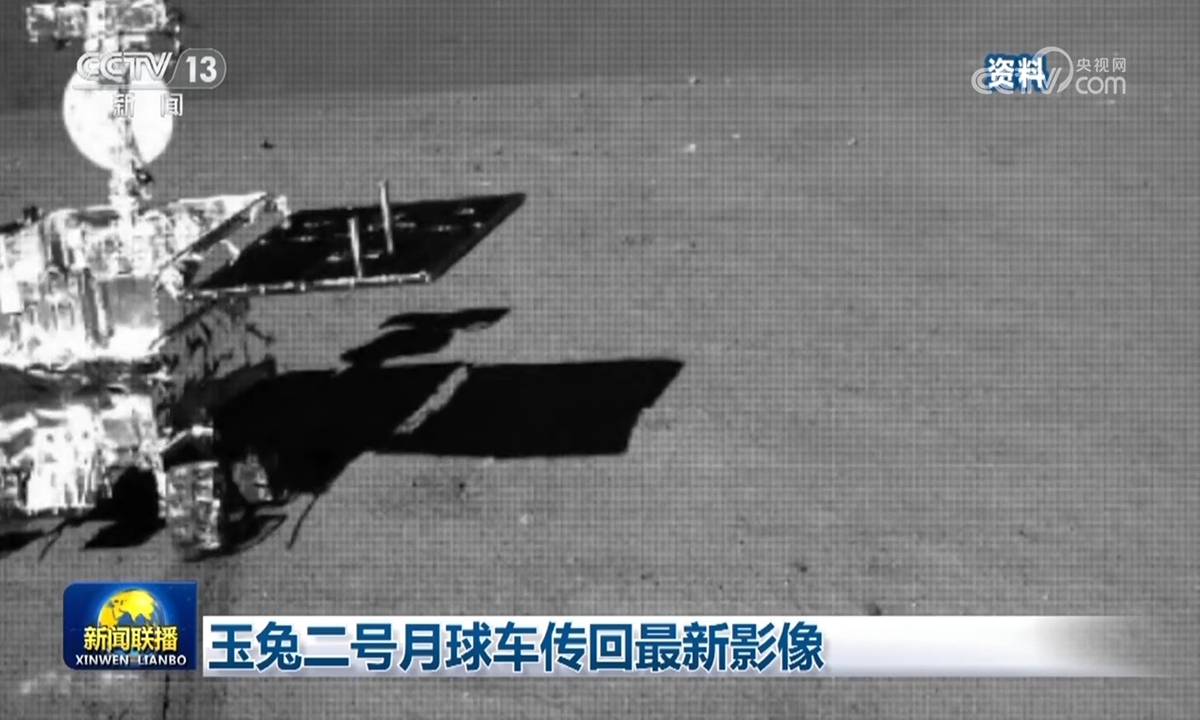
China's Yutu-2 lunar rover sends back fresh images from the moon's far side on September 17, 2024. Photo: from web
As people across China and around the world celebrate the Mid-Autumn Festival, traditionally marked by gazing at the full moon, China's Yutu-2 lunar rover has delivered a special surprise - fresh images from the moon's far side.
To date, Yutu-2 has traveled 1,613 meters on the lunar surface since its landing in January 2019, making it the longest-working lunar rover in the world.
The Yutu-2 rover, or Jade Rabbit-2, was launched into orbit in December 2018 as part of the Chang'e-4 lunar probe. It landed on the far side of the moon in January 2019. In Chinese folklore, Yutu is the mythical white rabbit that accompanies the moon goddess, Chang'e, from whom the lunar mission derives its name.
By far, the Yutu-2 has accumulated nearly 5 years and 9 months of operational time, far exceeding its designed lifespan of three months and having become the longest-working lunar rover. Recently, it completed its 71st lunar day of work and transmitted new images back to Earth, China Central Television reported on Tuesday.
During its stay on the moon, Yutu-2 has gathered valuable geological information, including data on the surface morphology, shallow structure, and material composition of the Chang'e-4 landing area. It has also contributed important scientific data regarding geological evolution and the early evolution of the moon's crust.
In addition to the Yutu-2, both the Chang'e-3 and Chang'e-4 landers are also active on the moon. China's relay satellites, Queqiao and Queqiao-2, are also still operational in the lunar orbit, according to Zuo Wei, deputy chief designer of the ground application system for the Chang'e-4 mission.
Queqiao has facilitated communication between the Chang'e-4 mission and Yutu-2, while Queqiao-2, after having completed the Chang'e-6 mission, is now conducting scientific exploration, awaiting the arrival of Chang'e-7.
Wu Weiren, chief designer of China's lunar exploration program, has previously revealed that the Chang'e-7 mission, planned for implementation around 2026, is progressing smoothly. The main task of this mission is to search for evidence of water ice at the lunar south pole.
If successful, the Chang'e-7 mission is expected to become the world's first to land on the lunar south pole, creating conditions for long-term human presence on the moon and paving the way for future human exploration of deep space, including Mars, Wu said.
Global Times




